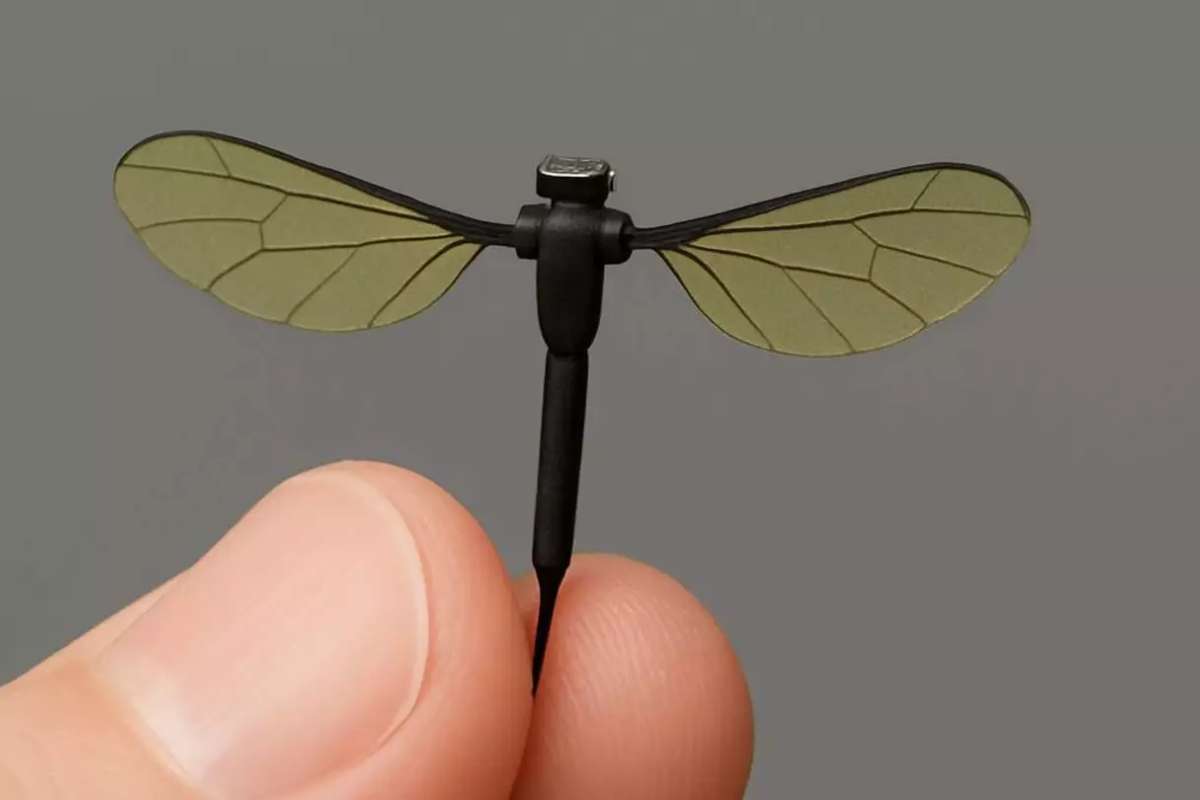On June 20, 2025, China’s National University of Defence Technology (NUDT), based in Hunan province, publicly revealed a groundbreaking militarydevice now widely referred to as the China Microdrone, engineered for covert surveillance missions. The announcement, aired on China Central Television (CCTV), showcased a mosquito-sized device capable of ultra-discreet reconnaissance, potentially transforming how close-proximity intelligence is gathered. Developed by NUDT’s military robotics division, the microdrone merges advanced bionics, miniature propulsion systems, and lightweight materials to achieve high maneuverability and radar evasion.
Roughly 1.3 centimeters in length, the insect-inspired China Microdrone is controlled via a smartphone and equipped with ultra-miniaturized cameras and microphones, making it adept at capturing images, audio, and even electronic signals. Its four leaf-like wings allow it to mimic insect flight patterns, making it ideal for penetrating tight indoor spaces while staying undetectable by conventional radar systems. The project signals a strategic push by China to lead in micro-robotic defense technologies, amid growing global investment in unmanned surveillance platforms.
Strategic Leap in Micro-Robotics and Urban Warfare
The China Microdrone prototype forms part of a larger initiative that includes humanoid robots and bionic UAVs. In televised demonstrations, the microdrone was seen undergoing lab testing and limited outdoor trials, signaling its advanced prototyping stage. NUDT student Liang Hexiang emphasized the drone’s suitability for “special missions,” highlighting its ability to operate in dense or restricted environments where larger drones fall short.
When compared to NATO’s Teledyne FLIR Black Hornet 4, a palm-sized drone already in military use, the Chinese microdrone excels in concealment and biological realism. However, it may face limitations in endurance, range, and payload. The Black Hornet supports GPS-denied navigation and has a 2 km operational radius, while NUDT’s drone appears to rely on real-time line-of-sight control. Still, the Chinese design offers a fresh approach to ultra-close intelligence, particularly in urban combat or intelligence-gathering operations where stealth is crucial.
Military and Geopolitical Implications
The debut of China Microdrone has significant military and geopolitical ramifications. Its ability to evade detection and infiltrate secure indoor spaces could enhance China’s capacity for silent intelligence-gathering, facility monitoring, and electronic surveillance. Strategically, it provides a new asset for China’s special forces and intelligence operations, reinforcing its ambitions to dominate future warfare through robotics and artificial intelligence.
This development could spark a new wave of defense innovation among global powers, especially as Western nations consider countermeasures to nano-scale threats. From non-lethal psychological operations to electronic eavesdropping, the potential uses of this device are vast. While not yet deployed, the drone’s national showcase indicates China’s readiness to scale and possibly weaponize it for next-generation military engagements.
As global defense strategies evolve, the China Microdrone marks a significant shift toward ultra-covert, biologically inspired surveillance, highlighting the fusion of miniaturized technology and national security ambition.
Visit Mr. Business Magazine to read more.







